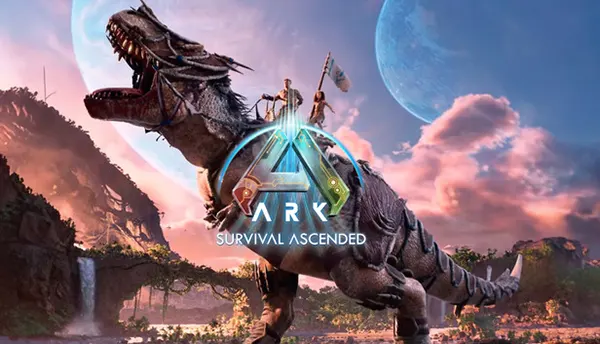Reverse 1999: A Psychological Puzzle Framed in Turn-Based Strategy and Visual Novel Artistry

“Reverse 1999” is a narrative-rich tactical RPG that combines the mechanics of turn-based combat with a visual novel-style storyline. Released globally in October 2023 and continuously updated through early 2025, this game has found a solid audience among players who appreciate depth in both gameplay and storytelling. Set in a world disrupted by a mysterious phenomenon known as the “Storm,” players assume the role of the Timekeeper, travelling across eras to preserve the timeline and confront metaphysical threats.
A unique blend of turn-based combat and narrative design
The core gameplay loop of “Reverse 1999” revolves around strategic team building and card-based turn-based battles. Each character, or Arcanist, is categorised into one of six Afflatus types—beast, intellect, spirit, star, mineral, or plant—creating a dynamic elemental system. Understanding these interactions is crucial for progressing through the game’s increasingly challenging battles, especially in the Memory, Wilderness, and UTTU Theatre game modes.
Characters are acquired through a gacha-style system, and their stories are woven into the main campaign and side quests. Every chapter unfolds through richly illustrated scenes, fully voiced dialogue, and animated cutscenes. The script is intelligent and philosophical, often dealing with themes such as existentialism, time, memory, and identity—topics that are rarely explored in mobile RPGs.
Moreover, each battle is supported by a card system where players must combine and upgrade skill cards to unleash powerful Ultimate moves. This mechanic adds layers of tactical depth, rewarding players who take time to learn optimal synergy between units. The turn economy and status effects, like Fortitude and Mania, encourage planning and foresight instead of raw power.
The importance of era-based storytelling
What sets “Reverse 1999” apart is its era-hopping structure, where players visit key moments in time—from 1920s London to 1990s Taipei—meeting characters drawn from a variety of cultures and mythologies. This historical lens provides not only visual and thematic diversity but also elevates the narrative into an almost educational experience. The writing subtly integrates real-world events and philosophies without sacrificing fantasy elements.
Each chapter feels like a period piece, supported by carefully curated music and costumes that reflect the era in question. The artistic team behind the game has meticulously designed every visual element, blending Art Deco, Renaissance, cyberpunk, and noir influences. This attention to detail deepens immersion and supports the emotional arcs of the characters.
Events and seasonal updates continue to expand on these eras, offering limited-time content and bonus stories. As of February 2025, the game’s timeline spans over a dozen major historical settings. Players are encouraged to revisit chapters with new context, as lore is frequently revisited and reinterpreted through later content drops.
Psychological tension and character development
Psychological themes are the heart of “Reverse 1999.” The characters often struggle with traumatic memories, ethical dilemmas, and abstract notions of fate and autonomy. Instead of traditional RPG tropes, their arcs explore emotional healing, social conflict, and philosophical inquiry. The protagonist—the Timekeeper—is silent, allowing players to project their own interpretations onto their interactions and decisions.
Notably, character events and Interlude stages reveal hidden motivations and past tragedies, expanding beyond surface-level dialogue. Arcanists like “X,” “Regulus,” and “Sonetto” represent archetypes that are deconstructed across different story beats. Some chapters even shift genre entirely, taking on horror, surrealism, or detective thriller tones to reflect a character’s psyche.
Voice acting, available in multiple languages including English, Japanese, and Korean, significantly enhances character authenticity. The localisation efforts preserve cultural nuance, while UI elements such as handwritten notes, journals, and illustrations provide diegetic storytelling. This makes every interaction feel purposeful and emotionally charged.
Accessibility, monetisation, and platform integration
“Reverse 1999” is available on iOS, Android, and Windows PC via a native client and the official HoYoverse platform. Its cross-save functionality allows seamless switching between devices. The UI is optimised for both touchscreen and mouse controls, making the experience smooth across platforms. Frequent updates ensure compatibility with the latest OS versions as of early 2025.
The monetisation is based on a premium gacha system with pity mechanics, ensuring guaranteed SSR characters after a set number of pulls. Free-to-play players receive ample resources through login bonuses, events, and main story progression. While some characters may be harder to obtain, the game’s balance does not lock content behind paywalls.
In terms of accessibility, the developers have implemented customisable font sizes, colourblind support, and togglable animations. The auto-play and speed options during battles allow for flexible pacing, appealing to both casual and hardcore audiences. Additionally, a newly added glossary helps newcomers understand key lore concepts and gameplay terms without overwhelming them.

Community reception and future outlook
By February 2025, “Reverse 1999” has cultivated an active global community. Online forums, fan art galleries, and lore theory discussions continue to thrive. The developers frequently engage with players via livestreams and social media, showcasing upcoming content and responding to feedback. Transparency and creative consistency have become hallmarks of the game’s brand identity.
The title has also earned accolades for its innovation in mobile storytelling. It was nominated for “Best Narrative” and “Best Art Direction” at several 2024 game award ceremonies, solidifying its reputation as more than just a gacha title. It demonstrates how mobile platforms can support complex, high-quality experiences without compromising on artistic vision.
Looking ahead, teasers for the 2025 content roadmap hint at darker themes and expansions into futuristic timelines. The addition of new gameplay systems—such as cooperative multiplayer raids and timeline branching paths—is also in development. These features promise to deepen both the mechanical and narrative layers of the game.
Final thoughts on its lasting impact
“Reverse 1999” stands as a benchmark for what mobile RPGs can aspire to be: deeply human, stylistically bold, and intellectually challenging. Its blend of historical fiction, psychological exploration, and strategic gameplay offers a rare mix that resonates with both gamers and story lovers.
The developers have successfully crafted a game that rewards patience, curiosity, and emotional investment. Each decision, each line of dialogue, feels like part of a larger mosaic that continues to grow with each update. It’s a living narrative, rather than a static product.
As we move further into 2025, “Reverse 1999” continues to evolve, reminding players that games can be more than entertainment—they can be artful, reflective experiences that linger long after the screen fades to black.



